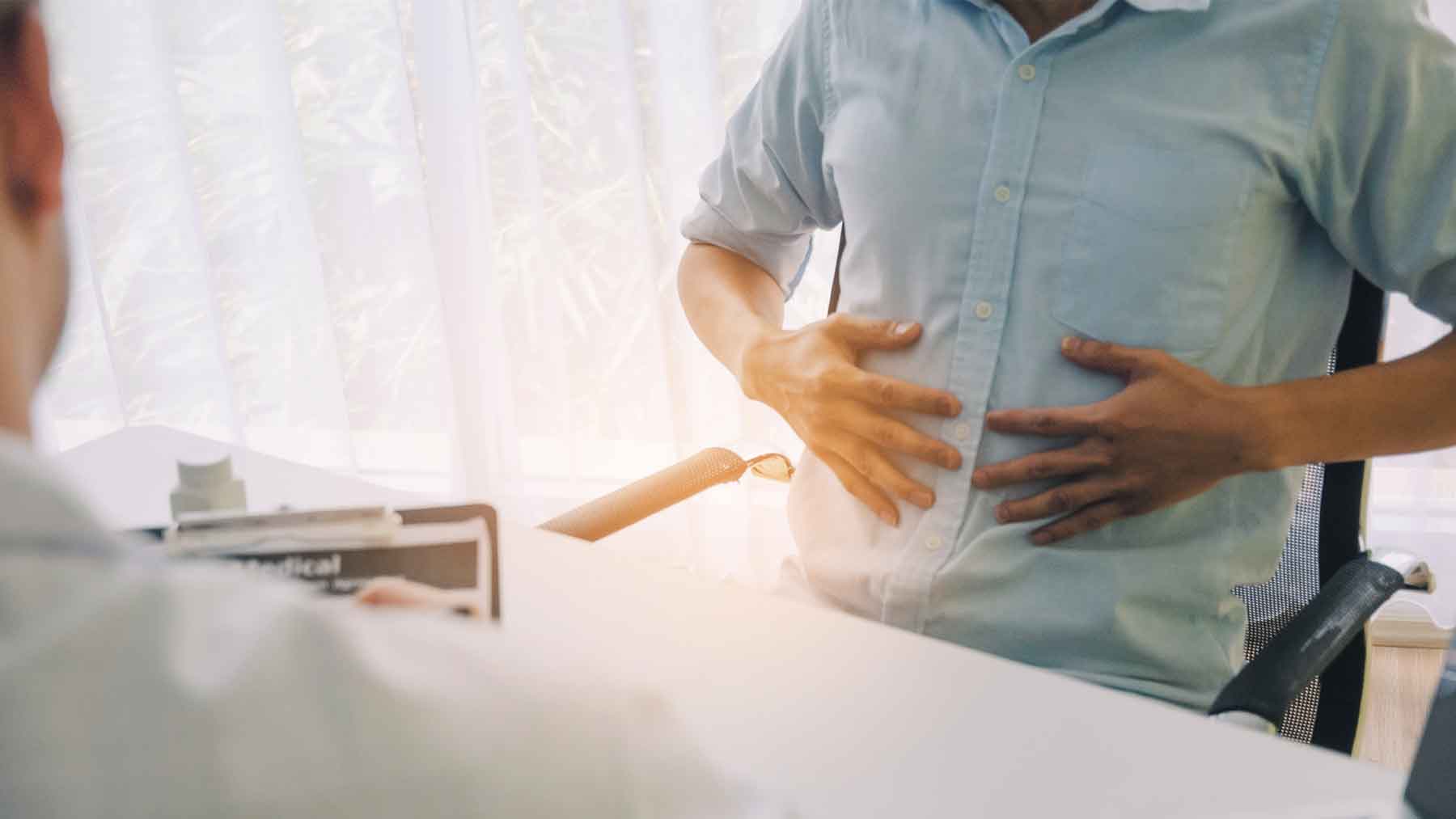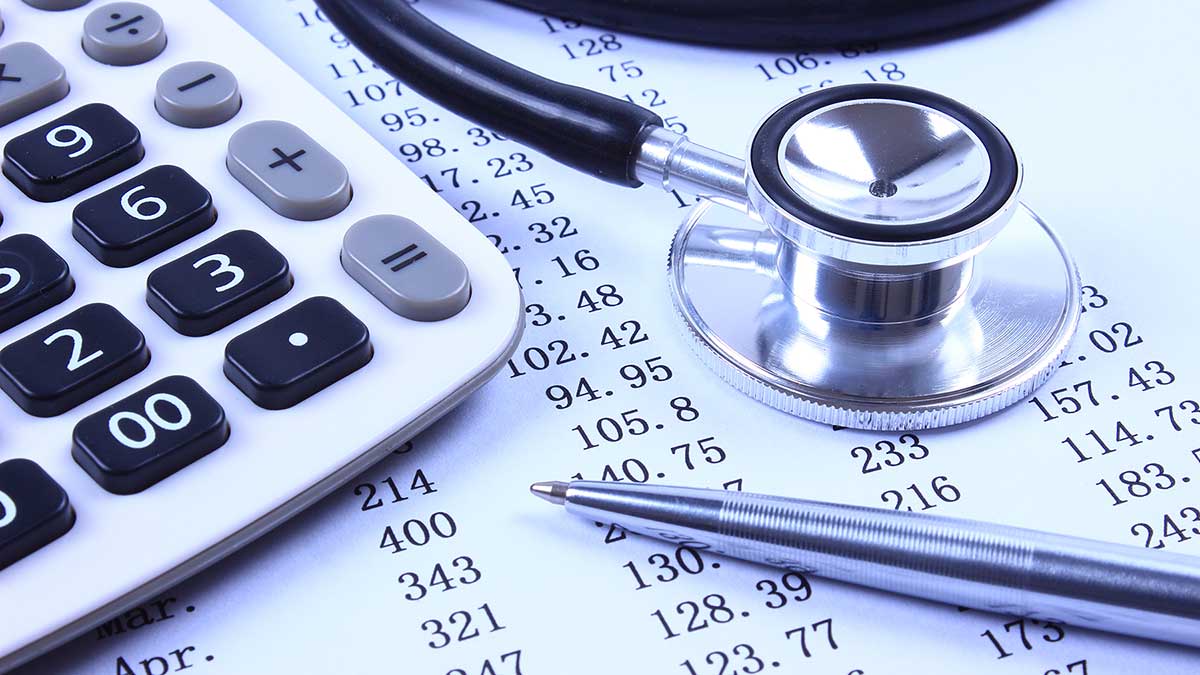Gallbladder symptoms to watch for

The most common general surgery procedure in America is the cholecystectomy. You likely know this procedure as having your gallbladder out. If you’re experiencing pain in the upper right quadrant of your abdomen, your gallbladder may be the cause.
Let’s examine how and why symptoms occur from the gallbladder. The gallbladder’s job is to collect bile from the liver and store it. After you eat a meal, the gallbladder releases bile into the digestive system. The stored bile is passed from the gallbladder through the cystic duct, which also connects to the ducts that originate in the liver. The bile flows into the small intestine to help digest fat. When bile doesn’t flow properly out of the gallbladder, patients experience symptoms that can range from mild to severe.
The first sign that something is wrong is usually pain. Commonly, the pain starts after you eat a meal that’s high in fat, and it hurts in the upper right section of your abdomen. If you have pain in a different area of the abdomen, it’s less likely to be caused by a gallbladder problem.
Some people have pain that comes and goes, which is referred to as biliary colic. You might recognize the word colic from when your children were babies. We all know stories of babies who have periods of intense crying that comes and goes. In this case, biliary colic refers to pain that comes and goes with the ingestion of fatty food. Typically, the pain begins soon after you eat a fatty meal, and fades away until the next meal of fatty food.
If the pain comes and goes with ingestion of fatty meals, you may be experiencing symptomatic cholelithiasis, or gallstones that cause pain. Not all gallstones are problematic, however. Interestingly, about 10% to 20% of us have gallstones and only about one in five of people with stones will ever have trouble. If a gallstone causes a blockage in the cystic duct—cholecystitis—you can expect more severe pain in your right upper quadrant as well as other symptoms, including fever, chills, nausea and vomiting.
The pain also may radiate toward the midline of the abdomen or toward your back. These symptoms may come on suddenly and send you to the emergency department. Some patients believe they’re having a heart attack. If the gallstone has blocked the cystic duct and prevented the gallbladder from emptying, you’ll develop inflammation of the gallbladder caused by the blockage.
An ultrasound of the right upper quadrant of your abdomen may show the presence of stones in your gallbladder and in the cystic duct. It may also indicate inflammation or a thickening of the gallbladder that might be the result of a cystic duct blockage. Sometimes, ultrasounds can be inconclusive. Your doctor might request an LFP, or liver function panel, a blood test to check for evidence of inflammation. The HIDA scan is an excellent imaging test for diagnosing gallbladder pathology. HIDA stand for hepatobiliary iminodiacetic acid. It’s used to diagnose problems of the liver, gallbladder, bile ducts and small intestine. The scan uses a radioactive tracer injected into your vein to view how bile flows out of the liver, through the ducts and into the small intestine.
Only a fraction of people with stones in their gallbladder need to have them removed. Inflammation is a different scenario. If your gallbladder is inflamed (cholecystitis), the recommended treatment is surgery.
If you have biliary colic, you need to talk with your doctor or surgeon. I’d ask you, “How much does it hurt? Is it lifestyle inhibiting?” My recommendation would be: if the pain isn’t causing you to change how you live your life, don’t have surgery. But call me if it gets worse.
There are other things you can do to reduce your risk of gallbladder problems. For example, dietary modification can help. Reducing your fat intake reduces your risk and makes you a better candidate for surgery. There’s one other treatment to consider. There is a medication that may dissolve gallstones: ACTi gall works for some patients, but it can cause diarrhea.
Having your gallbladder out is usually a minimally invasive procedure. This offers the advantages of fewer complications, including less infection and faster recovery. At the Wexner Medical Center, we provide this surgery with both the laparoscope and the assistance of a robot. For our patients who are overweight, using the robot makes it more likely that the gallbladder can be removed with a minimally invasive procedure to avoid a large incision under the rib cage.
Learn more about treating digestive diseases at Ohio State.
Daniel Eiferman is a surgeon specializing in acute care surgery, general surgery, trauma and critical care at The Ohio State University Wexner Medical Center.




